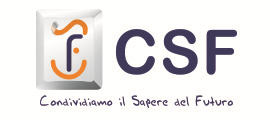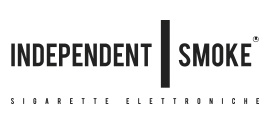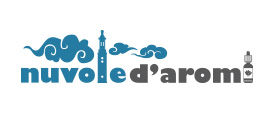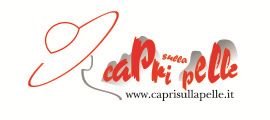How to capture the soul in portraits (without photographer clichés)

Let's face it. Our feed is saturated with technically impeccable portraits: skin smoothed like porcelain, artificially bright eyes, and creamy, indistinct backgrounds. They are beautiful images, certainly. But after the third, the fourth, the tenth, they become background noise. They are portraits that show what a person looks like, but rarely tell who that person is.
There is another path. A more difficult path, but an infinitely more rewarding one. It is character photography.
This approach doesn't seek to beautify, hide, or idealise. It seeks to reveal. It sees wrinkles not as flaws to be cloned away, but as the map of a life lived. It sees the asymmetry of a smile, the scar on an eyebrow, or the intensity of a gaze lost in the void as the fundamental elements of the story.
Photographing character means moving from being a simple 'executor' of pleasant images to being an 'interpreter' of human stories. It means that our equipment, our light, and our technique are not the end, but the means to establish a connection.
In this in-depth guide, we will break down the process piece by piece. We won't just say 'capture the emotion', but we'll see how to do it, technically and psychologically. Prepare to set aside the pursuit of polished perfection to embrace the power of authenticity.
The mindset: first psychology, then the shot
Before even touching the aperture dial, the biggest change must happen in our heads. The character photographer isn't a technician; they are a mix of an interviewer, a psychologist, and an empathetic director.
Authenticity beats perfection (always)
The 'beauty' portrait seeks to conform the subject to an aesthetic ideal. The 'character' portrait seeks to extract the subject's uniqueness. Our goal isn't to make people say 'what a beautiful photo', but 'what an interesting person'.
Forget 'porcelain skin'. We are looking for 'skin of life'. Freckles, pores, expression lines (laughter lines), an unshaven beard, the tiredness under a new parent's eyes: these are not problems to be solved in post-production, they are the beating heart of the portrait.
The photographer as a mirror (not a filter)
Our task is to create a safe space. The subject must feel comfortable being vulnerable, lowering the social mask we all wear. If we present ourselves as technicians obsessed with the perfect light, the subject will feel scrutinised. If we present ourselves as people genuinely curious about their story, they will feel seen. Empathy is the most important technical tool we have.
Technique at the service of the soul: settings and lenses
The gear doesn't make the photo, but the right technical choices allow us to translate intention into reality. Let's see how to use the camera not to 'freeze' a moment, but to 'interpret' a character.
The choice of lens: beyond 'bokeh-mania'
The choice of focal length defines our spatial and psychological relationship with the subject.
-
The classic 85mm (or 50mm on APS-C): It's the king of portraits for a reason. Its slight compression pleasantly flattens features and the working distance (neither too close nor too far) is ideal for interaction. Pro tip: don't always use it at f/1.4 or f/1.8. Sure, the bokeh is nice, but if we're photographing an artisan in their workshop, we want to see that workshop. Closing down to f/2.8 or f/4 often gives more context and three-dimensionality to the face, without losing separation.
-
The wide-angle (35mm or 28mm): This is the environmental portrait lens. It's an intimate and courageous choice. You have to enter the subject's personal space. The slight distortion, if managed well, can add dynamism. It's perfect for showing a person in their world: a chef in their chaotic kitchen, a musician in their recording studio. It forces the viewer into the scene.
-
The telephoto lens (135mm or 70-200mm): This lens creates strong compression and powerful isolation. It's excellent for capturing intense gazes and for separating the subject from a messy background. The risk? It can create a sense of detachment, of being 'papped'. It should be used when the goal is emotional isolation or pure emphasis on the face's form and expression.
-
Prime lenses vs. Zooms: Zooms are versatile. Primes are intentional. Using a prime lens (like a 50mm) forces us to move with our feet. It forces us to think actively about composition and distance, favouring a more considered and less 'lazy' approach.
Focus: the eyes are everything (but not just)
'The eyes are the window to the soul' is a cliché, but in photography, it's a physical law.
-
Eye-AF (Autofocus on the eye): If your camera has it, use it. It's the most important technological revolution for portrait photographers. Set Continuous AF (AF-C) and let the camera track the eye, so you can concentrate on the interaction and composition.
-
The 'Catchlight': It's not optional. It's the reflection of light that gives life to the eye. Without a catchlight, the eyes appear flat, 'dead'. You don't need a flash: just position the subject in front of a window, the open sky (but in the shade), or use a small reflector panel.

Aperture (Diaphragm): narrative depth of field
The aperture isn't just for blurring the background. It's a narrative tool.
-
Wide aperture (f/1.2 - f/2.8): Use it to isolate. When the subject is all that matters and the environment is just a distraction. It's a choice of intimacy, almost claustrophobic. It's perfect for a close-up where the only story is in the gaze.
-
Medium aperture (f/4 - f/8): This is the golden zone for character portraits. It allows the entire face to be in focus (from the nose to the ears), but also to suggest the environment. If you're photographing a bookseller among their shelves, you want it to be clear they are books, not just a formless brown blur. This aperture gives equal dignity to the subject and their context.
-
Closed aperture (f/11 - f/16): Necessary when the environment is as important as the subject. It's the choice par excellence for the pronounced environmental portrait, where the person is an element within a larger scene.
Shutter speed and ISO: realism and texture
-
Speeds: For portraits, the rule is to play it safe (at least 1/125s handheld, or 1 / (2 * focal length)). But don't be afraid to experiment. A slight motion blur (e.g., 1/30s) on a musician's hands while they play, keeping the face still, can add incredible dynamism.
-
ISO: Grain is not your enemy. We live in an era where cameras produce incredibly clean files even at 6400 ISO. But sometimes, a bit of grain (or adding it in post) can add texture, a 'gritty' sense of realism, almost cinematic, which pairs beautifully with character portraits. A little grain is better than a blurry or underexposed photo.
Light is the paintbrush: illuminating character
Light sculpts. Light hides. Light reveals. For character, 'imperfect' light is often the most effective.
Natural light: the most honest
-
Window light (diffused): This is the painterly choice. Place the subject near a large window on a cloudy day (or one not in direct sunlight). It produces soft shadows and gradual transitions. It's a gentle light but, if used from the side, can still sculpt features beautifully.
-
Direct sunlight (hard): Many photographers avoid it like the plague. A mistake. Hard light is pure drama. It creates sharp shadows, high contrast, and enhances the texture of the skin (wrinkles, beards, sweat). It's a bold, aggressive light, perfect for strong subjects: athletes, labourers, people with decisive characters. Try using it as a sliver (split lighting) for a 'noir' effect.
-
Reflected light: Don't have a softbox? Use a white wall. Have the subject sit near a light-coloured building in the sun. You'll have a huge, soft, and free light source.
Artificial light: control and drama
If you want total control, flash comes into play (studio strobe or speedlite). But forget the flat, frontal 'passport photo' light.
-
A single flash + modifier: That's all you need.
-
Rembrandt Lighting: A classic. Position the light at 45° to the subject, slightly higher. It creates a small triangle of light on the shadowed cheek. It's the basic setup for drama.
-
Split Lighting: Light at 90° to the side. Half the face in light, half in shadow. Very masculine, intense, mysterious.
-
Grazing Light: Position the light almost parallel to the face. This is the secret weapon for texture. Every pore, every wrinkle, every hair of the beard will cast a shadow. It's not 'pretty', but it's incredibly powerful for portraits of the elderly or workers.
-
-
Modifiers for character:
-
Softbox/Octabox: The safe choice for soft light.
-
Beauty Dish (with grid): My favourite. It produces a more contrasted and 'crisp' light than a softbox, but softer than bare flash. The honeycomb grid focuses the beam of light, creating a natural vignette that draws attention to the face.
-
Bare flash: For the 'paparazzi' effect or to simulate hard sunlight in the studio.
-

The play of shadows (Low Key)
For character, shadows are as important as light. Don't be afraid of low key (dark backgrounds, deep shadows). Shadows create mystery, three-dimensionality, and guide the eye. A character portrait often emerges from the darkness.

The subject: finding and directing the story
You can have the best technique and light in the world, but if the subject is stiff, you'll just have a technically perfect photo of a stiff person. 90% of a character portrait is rapport.
Where to find interesting subjects
Sure, you can photograph your friends. But the real challenge (and the real fun) is getting out of your comfort zone.
-
Artisans and trades: The best choice. Carpenters, tattoo artists, tailors, ceramicists, mechanics. They have two advantages: they are passionate about their work (and love to talk about it), and they have an environment (the workshop) and tools (props) that already tell a story.
-
The elderly: Their faces are a library. Go to a day centre (asking permission), talk to your grandparents, to their friends. They have stories to tell and are often happy to be heard.
-
Athletes (not models): Boxers, dancers, weightlifters. Photograph them after training. The sweat, the fatigue, the concentration: it's all there.
-
Personal projects: Give yourself a theme. 'The faces of my neighbourhood'. 'Dog owners at the park'. 'Commuters'. A project gives you a reason to approach people.

The "Rapport" phase: a conversation with a camera
This is the heart of it all.
-
Don't start shooting right away: Dedicate the first 10-15 minutes just to talking. Without the camera. Ask about their work, their passion, their day. Listen. Practise active listening.
-
Be genuinely curious: If you're photographing a luthier, ask them what the hardest piece of wood to work with is. If you're photographing a grandmother, ask her for her best recipe. People open up when they talk about what they love.
-
Forget "cheese!": It's the word that kills authenticity. Never ask someone to smile.
-
Direct with "actions" and "thoughts", not "poses":
-
Instead of: "Tilt your head to the right."
-
Try: "Look out of the window and think about what you'll do tomorrow."
-
Instead of: "Relax your shoulders."
-
Try: "Take a deep breath and let it out slowly."
-
Instead of: "Give me a serious look."
-
Try: "Think about that time you had to overcome a difficulty in your work."
-
-
The power of silence: After asking a question, be quiet. Keep shooting (perhaps with silent shutter) while the subject thinks. The micro-expressions that appear before the answer are pure gold.
-
Watch the hands: Hands betray awkwardness. But they are also powerful narrative tools. Don't hide them. Have the subject interact with their tools, pet their dog, rest their chin on their hand.

Context is king: environmental storytelling
A face alone tells a lot. A face in its environment tells a novel.
The environment as a second subject
The environmental portrait (environmental portrait) is the highest form of character portraiture. The environment isn't a background; it's a co-star.
-
What does the environment say? A tidy office tells a different story from a chaotic one. An artist's studio full of sketches and colours speaks of creativity.
-
Composition: Use the environment to guide the eye. Use the lines of shelves, windows, or tools to create leading lines that draw the eye to the subject.
-
Subject and environment in balance: Don't let the environment overwhelm the subject (unless that's the story, e.g., 'man lost in the metropolis'). Use light, colour, or depth of field (f/5.6) to slightly separate the subject, while keeping the context legible.
Clothing and props
Forget costumes. Ask the subject to wear their work clothes, or simply the clothes they feel most comfortable in. Work attire (a kitchen apron, a mechanic's overalls, a lawyer's gown) is the 'second skin' of the character.
Props must be authentic. Don't just give someone a random book: ask them to hold their favourite book, the one with the dog-eared pages. The tool of the trade is the perfect prop: a paintbrush for a painter, a whisk for a pastry chef, a worn-out basketball for a player.

Post-production: emphasise, don't alter
Editing for character is the opposite of beauty retouching. Our philosophy must be: enhance, don't flatten.
The editing philosophy
We are not erasing life, we are celebrating it.
-
Yes: Remove temporary imperfections (a spot, a recent scratch, a stray hair).
-
No: Remove permanent imperfections (wrinkles, scars, moles, enlarged pores). Those are the person's hallmarks. Hands off the clone stamp and healing brush on those details.
-
Frequency Separation: It's an advanced technique, but it can be used 'in reverse'. Instead of using it to smooth the skin, it's used to emphasise texture, working on colour and detail separately.
Colour vs. Black and White: the final choice
-
Black and White: It's the number one ally of the character portrait. Why? It removes the distraction of colour. The viewer is forced to concentrate on three things: light, form, and emotion. A good B&W portrait is timeless. It also allows you to push contrast and clarity further without creating unpleasant colours.
-
Colour Grading: If you use colour, do it with intention. Warm colours (reds, oranges) convey passion, energy, warmth. Cool tones (blues, greens) can convey isolation, calm, melancholy. Use colour theory to reinforce the story you're telling.

Key tools (Lightroom/Capture One)
-
Contrast, Clarity, and Texture: These are your best friends (and your worst enemies). They must be used sparingly. A +15 on 'Clarity' can bring out facial details incredibly. A +50 will give you the 'HDR-zombie' effect. Use local masks (brush, radial filter) to apply these effects only where needed (e.g., on the eyes, beard, hands), letting the rest of the skin breathe.
-
Dodge & Burn: This is the king of techniques. It's the digital equivalent of sculpting with light. Use a low-opacity brush to slightly 'lighten' the already lit parts (e.g., cheekbones, bridge of the nose, catchlight) and 'darken' the shadows (e.g., sides of the nose, jawline). This increases three-dimensionality and drama without altering reality.
Insight takeaways: the character portrait checklist
We promised you: a long article, but also a practical one. Here is your pocket checklist.
-
Mindset: You're not looking for beauty, you're looking for the story. Empathy is your primary tool.
-
Lens: Try a 35mm for the environment or an 85mm for isolation.
-
Aperture: Forget f/1.4. Try f/4 or f/5.6 to include the context and get more sharpness on the face.
-
Focus: Always and only on the eyes (Eye-AF is your friend). Make sure there's a catchlight.
-
Light: Don't fear hard light. Use side lighting (Rembrandt, Split) to create drama and texture.
-
Subject: Look for artisans, the elderly, people with trades.
-
Rapport: Talk for 10 minutes before shooting. Ask questions. Listen.
-
Direction: No 'cheese'. Give thoughts, not poses. (e.g., "Think about your most difficult project").
-
Context: The environment (workshop, studio, home) is your second subject.
-
Post-production: Don't 'flatten' wrinkles. Use Clarity and Contrast with local masks. Consider black and white.
Conclusion: your next best portrait
Photographing character is a journey. It's an evolution. It's the shift from 'taking photos' to 'telling stories'. It will be difficult at first. You'll feel awkward talking to strangers. You'll get the light wrong. Your photos will look 'strange' compared to Instagram's standards.
Excellent. It means you're on the right track.
The character portrait doesn't seek easy 'likes', it seeks deep connections. It's a photo that the viewer won't forget after three seconds of scrolling. It's a photo that makes them stop and ask: 'I wonder what this person's story is'.
Now it's your turn. Take your camera, go out and, even before you shoot, find someone and ask them their story. The best photo of your life will be born from that conversation.
And now, over to you!
This is our approach to the character portrait. But what's yours? What are your difficulties in connecting with subjects? Is there a lighting technique you prefer for bringing out personality?
Share your attempts, your challenges, or your favourite character portraits in the comments. The Insight team is here to answer!
By accepting you will be accessing a service provided by a third-party external to https://insightadv.uk/

 IT
IT  EN
EN 
































































Comments